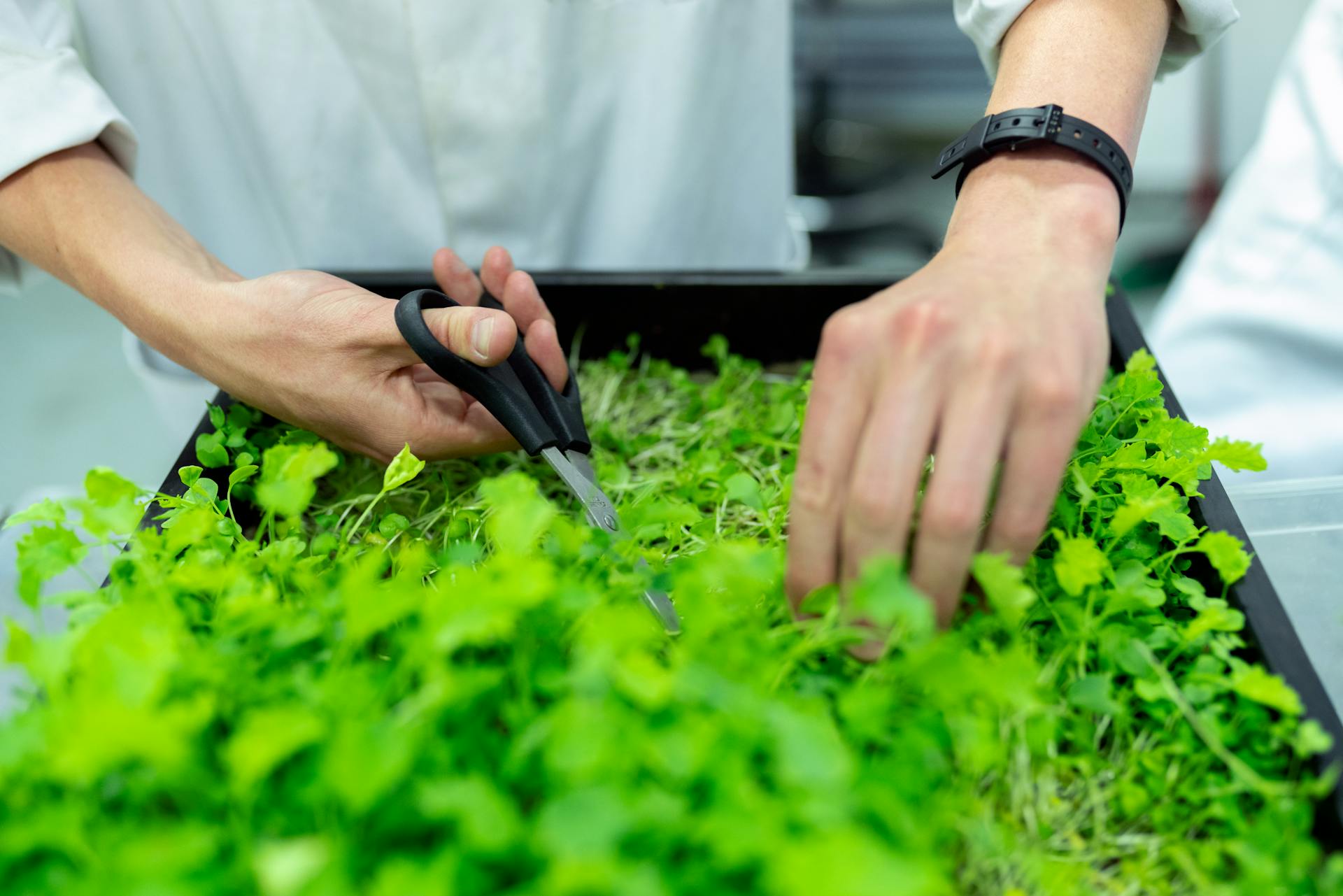
Is fish farming sustainable? This is a question that has been on the minds of many as the global population is expected to reach 98 billion people by the coming years. With food scarcity being a concern, finding a viable solution to feed half of this growing population is crucial. However, climate change and other factors are driving dire consequences for our current food production methods.
Agricultural sector experts and researchers suggest that fish farming practices could be an endurable source of edible meat production worldwide. It could ensure people have a viable food source while also contributing to a sustainable seafood supply. But, with fishy current problems such as disease outbreaks, habitat destruction, and over-fishing, can fish farming really provide a sustainable solution to our food crisis? In this article, we will explore the pros and cons of fish farming and examine whether it is indeed a sustainable option for the future.
Something Fishy: Current Problems in Aquaculture
The aquaculture industry, which is the farming of fish and other marine wildlife, has grown rapidly in recent years. However, there are growing concerns surrounding aquaculture's sustainability. The United Nations Conference estimates that overharvested and fully exploited oceans fish stocks have led to unsustainable worldwide fishing rates. Factors deem fish farming as unsustainable worldwide.
Invasive fish species pose a significant threat to wild fish populations as they can escape from aquaculture farms and compete with native species for food and habitat. Escaped farm-raised fish typically breed with wild fish resulting in weakened genetics, and their offspring struggling to survive. A study on Atlantic salmon escapees by Norwegian fisheries found that lower genetic transfer leads to a decreased survival rate of healthy Atlantic salmon populations.
Limited statistical information exists about the ecological consequences of invasive species overtaking wild populations; however, it's possible that land-based invasive species could significantly alter marine biodiversity if not contained. As the world's population continues to grow, the demand for seafood will also increase. Therefore, it's essential to address these problems in the aquaculture industry before they become uncontrollable.
1. An Influx of Sea Lice and Other Pests
Fish farming, like any other type of farming, is not without its challenges. One of the biggest challenges facing fish farmers is the influx of sea lice and other pests. Sea lice are a parasitic species that are commonly susceptible to fish populations. They can stunt fish growth, decrease reproductive capabilities, and even result in mass population loss.
When sea lice grasp onto a fish, they can cause widespread infections that have dire effects on fish farming operations. Grappling minor cases can be managed through chemical treatments or biological controls, but sea lice larger infestations require more drastic measures. The situation occurs all too often, and as a result fisheries worldwide suffer substantial economic losses due to reduced growth rates and parasitic diseases.
Revolutionary Advances in Environment-Friendly Fish Farming
As the demand for seafood continues to rise, the fishery industry is looking towards aquaculture companies for a more sustainable solution. Developing advanced technologies targeting mitigating sea lice fresh innovations has become a top priority for fish farmers worldwide. With healthier organic fish feed and improved water management systems, these farms are working towards providing consumers with high-quality seafood that is environmentally friendly and cost-effective.
Aquaculture companies have been making significant advances in their efforts to reduce the environmental impacts of fish farming. These include the development of new technologies designed to improve water quality and reduce waste, as well as creating healthier organic fish feed that does not contain harmful chemicals or antibiotics. By focusing on these key areas, it is possible to create a more sustainable and ethical approach to fish farming that benefits both the environment and consumers.
1. Software Imaging for Managing Sea Lice
One significant issue in fish farming is the growth of sea lice, a parasitic crustacean that can cause harm to farmed fish. This is where advanced imaging technology like Ecotone's Spectralice camera comes in handy. This camera software can accurately count sea lice on up to 2000 salmon in 24 hours, unlike manual counting which limits farmers to only counting about 20 fish per hour.
Using this practice not only helps with fishery management but also allows aquaculturists to develop adequate solutions for preventing and controlling sea lice growth. Ecotone makes it possible for fish pens to be monitored 24/7 which reduces the risk of sea lice infestations going unnoticed. Thus, making fish farming more sustainable and eco-friendly.
2. Off-Shore Fisheries
Offshore fisheries are a promising innovation in the aquaculture sector. Research suggests that open-ocean fisheries can increase fish and shellfish yields, while maintaining healthier fish stocks than traditional methods. SalMar Group developed Ocean Farm 1, which operates approximately 12 km off the coast of Norway and can hold 15 million salmon in extensive open-water fish pens. Additionally, Ocean Arks Tech and Chile Oatech have created massive vessels with self-cleaning fish pens and low-emissions artificial intelligence to further improve sustainability. These offshore farms allow for larger currents and deeper depths, resulting in fewer parasitic infestations and less genetic compromise through interbreeding of escaped fish farm escapees that have negatively impacted local ecosystems.
Sustainable Fish Farming: Ensuring a Future for Our Oceans

Fish farming, or aquaculture systems, can be sustainable if managed responsibly. Unlike fish farms that use unsustainable practices such as adding chemicals, additives, hormones, and other harmful substances to the water and fish feed, sustainable fish farms ensure that the fish remain healthy by working hard to prevent damage to the natural food chain. This is an important aspect of sustainable fish farming as it ensures that nutritious animal protein is produced while minimizing waste.
Sustainable fish farms treat waste responsibly by actively monitoring water quality and using small surface area tanks for farmed fish. This prevents parts of the waste from spreading into open lakes or ocean waters where it can negatively impact marine life. Nutrients in animal waste byproducts are used to produce natural food stocks for the farmed fish. This ensures that the right combination of nutrients ensures that the fish grow naturally without any artificial intervention from pharmaceutical industry chemicals or other synthetic substances.
Fish skin plays a vital role in many industries including cosmetic manufacturers who use it in their products. Sustainable fish farms are moving inland and transitioning towards land-based aquaculture operations to manage demand in urban areas. By doing this, they reduce their reliance on open ocean waters where sustainability due to cleaner water and predictable water flows cannot be guaranteed. In addition, by reducing pests through careful management of inputs like feed and preventing overproduction of certain species, sustainable fish farming practices help protect wild populations from being overfished.
Innovative Ways to Achieve Sustainable Fish Farming

Fish farming, also called aquaculture, is one of the fastest-growing methods of producing food globally. With increasing capita fish consumption and seafood destined for human consumption, sustainable fish farming practices are crucial. The Food and Agriculture Organization (FAO) estimates that 600 aquatic species are produced globally in aquaculture systems that can be freshwater, brackish water, or saltwater. However, despite its benefits, fish farming has received criticism due to its impact on marine life and the environment.
One innovative way to achieve sustainable fish farming is by using closed systems. Closed systems involve tanks or land-based systems that minimize the nutrients expelled into the environment and eliminate fish escapes. These systems monitor water quality continuously and recirculate 99 percent of the water used while discharging wastewater that removes nitrate. Another approach involves integrated multi-trophic aquaculture (IMTA), where different species are combined to create a food web that mimics a natural ecosystem. For example, blue mussels can be grown in proximity to salmon pens, where they provide food for inorganic nutrients required by sea urchins and sea cucumbers present on the ocean floor below.
Another challenge is finding alternatives to traditional fish feed consisting mainly of ground fishmeal and fish oil from forage fish such as sardines, anchovies or herring. These species obtain omega-3s from microscopic algae or larger carnivorous fish such as sea bass fed with forage fish. A popular carnivorous farmed fish like salmon requires about 30-50% of its diet traditionally being sourced from these forage fisheries resulting in over-exploiting them causing environmental problems. The solution is finding new protein sources such as plant waste, yeast products or distillers dried grains while researchers at Maryland Center for Environmental Science have developed a feed made entirely from corn wheat and algae amino acids avoiding any fish oil or ground fishmeal.
A fresh viewpoint: Environmental Sustainability
Frequently Asked Questions
What are the disadvantages of fish farming?
Some of the disadvantages of fish farming include water pollution, disease outbreaks, and genetic modification of fish.
What is the most sustainable seafood?
The most sustainable seafood is the one that has been responsibly sourced and caught, such as wild-caught Alaskan salmon or farmed shellfish. Choosing seafood that is certified by organizations like the Marine Stewardship Council or Aquaculture Stewardship Council can help ensure sustainable practices.
What is a fish farm?
A fish farm is a facility where fish are raised in controlled conditions for commercial purposes. It allows for the mass production of seafood, providing a sustainable alternative to wild-caught fish.
How is fish farming becoming more sustainable?
Fish farming is becoming more sustainable through the use of practices such as reducing waste, using renewable energy sources, and implementing responsible harvesting techniques. These efforts help to preserve natural resources and promote long-term viability of the industry.
What makes a fish farm truly sustainable?
A truly sustainable fish farm operates in harmony with the surrounding ecosystem, uses responsible feed and waste management practices, and prioritizes the welfare of their fish.
Featured Images: pexels.com


